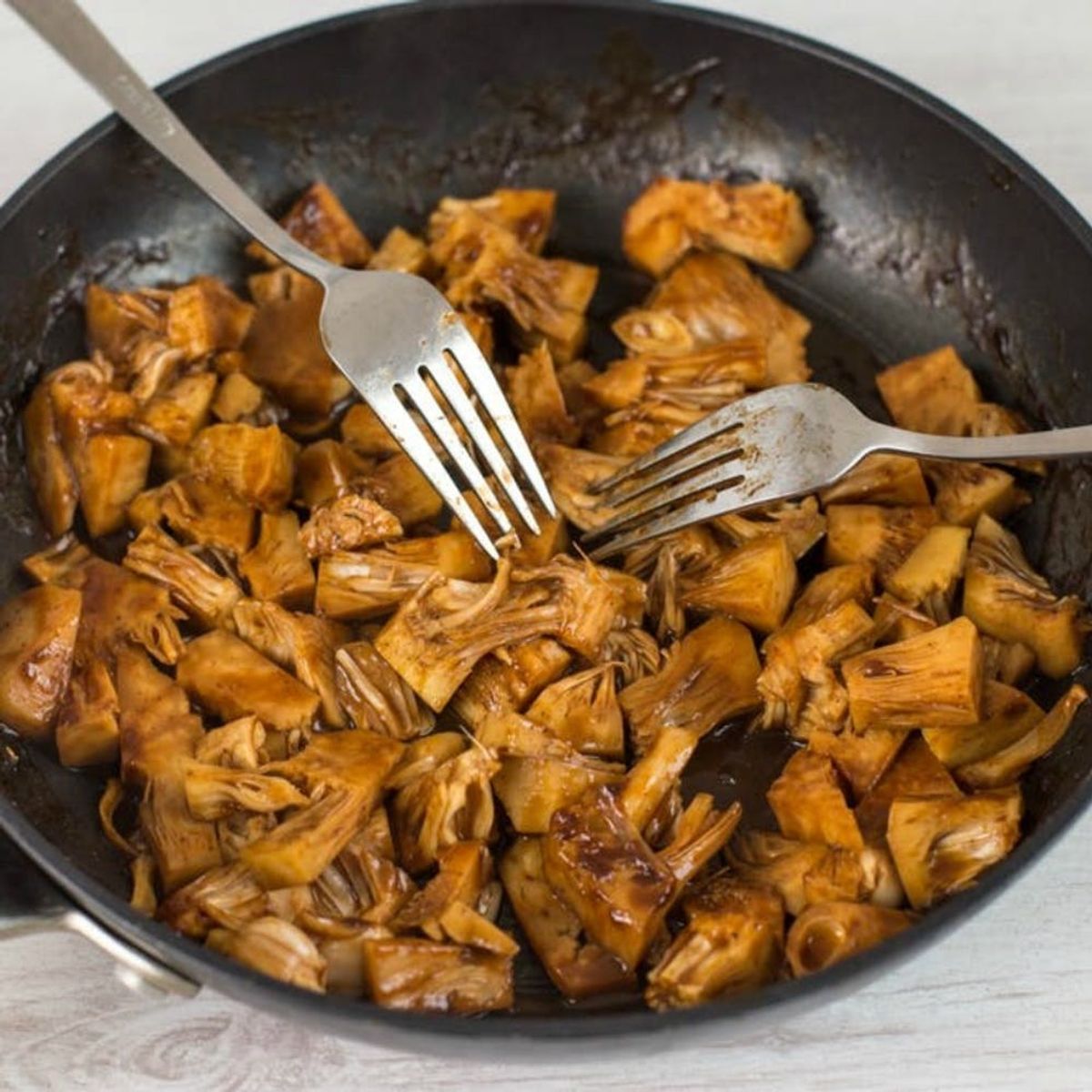Get jacked on jackfruit.
Everything You Need to Know How to Cook Jackfruit Like a Boss

Jackfruit is one of those ingredients we eat all the time, but it’s rare to actually prepare it at home. You can get savory jackfruit in meal-ready pouches in the vegetarian section of the grocery store, and you can snack on canned jackfruit in syrup when your sweet tooth starts aching. If you really want to get a better understanding of this enormous, delicious tropical fruit, though, you should try preparing it at home. Jackfruit is eaten one of two ways, either in its savory, unripe green state, or its ripe, sweet state.

Unripe green jackfruit is known for taking on the texture of pulled pork when cooked. You can stew it until tender, then broil or pan-fry it so it gets scrumptious crispy bits. Ripe jackfruit is a juicy tropical fruit that has a flavor that’s a cross between pineapple, banana, and mango. However you decide to eat it, scroll on for our complete guide to buying, butchering, and preparing your jackfruit.

1. Choose the perfect Jackfruit
Purchasing a jackfruit at the store can be a little daunting — they’re enormous. They can grow to weigh up to a hundred pounds (!), though you’ll usually find ones quite a bit smaller than that at the store. At some Asian grocery stores you’ll see them cut into large chunks then packaged on styrofoam trays; if you have that option in your area, you should go for it, especially if it’s your first time working with jackfruit. It’s hard to find whole unripe jackfruit in stores, and even harder to prepare it. But if you’re determined, look for jackfruit with an evenly green color and not much of a scent. Ripe jackfruit should have a noticeable, musky fruit odor and a yellow-green skin. If it’s pre-cut, the fleshy pods within ripe jackfruit fruit should be an orangey-yellow color and rather soft to the touch, while unripe jackfruit will be pale with light green tones and less distinct pods. In the US, the pre-cut fruit is usually the sweet, ripe variety.

2. Prepare your workspace
Jackfruit is notorious for being filled with an extremely sticky latex sap that can ruin your counters and knife if you aren’t careful — and the sap is even worse if you’re working with unripe green jackfruit. Prepare your workspace by lining your counter and cutting board with plenty of newspaper. Have extra newspapers or paper towels handy for wiping up sap as it comes out of the fruit. Wear a pair of powder-free gloves, then oil them and your knife liberally with cooking spray or coconut oil. Sap will start oozing out of the fruit once you cut into it. Use the newspapers or paper towels to wipe away the sticky sap so it doesn’t drip down and get all over your kitchen. Make sure you re-oil your knife after each cut — if you don’t take this precaution, the sap can easily ruin the blade.

3. Begin the butchery
Ripe Jackfruit: Since jackfruit is so large, it’s helpful to cut it into smaller pieces before extracting the fruit. Cut it length-wise into four pieces. Each jackfruit is filled with fleshy pods, each encasing a large seed. Remove the core running along each wedge, then dig the fleshy fruit pods out of the surrounding white fibers and extract the seeds. You can eat the seeds by boiling and peeling them — they have a texture like chestnuts and can be eaten as a snack or added to curries. If you don’t want to use them, you can compost or discard them with the rest of the scraps.
Once your fruit pods are extracted, you can eat them fresh or freeze them to use in smoothies. Discard the skin and fibers of the fruit carefully, so you don’t get sap anywhere. If you did get any sap on the blade of your knife, wash it thoroughly with soap and hot water. Then, hold the blade over an open flame from a lighter or your gas stove burner — the flame should burn off any of the sticky residue. You can also try using coconut oil to remove the latex (the sticky substance) — just rub it on the affected area, let it sit, and then scrub it off.
Unripe Jackfruit: If you’re cooking unripe jackfruit, start by cutting the skin off the fruit. Then, cut the flesh into large chunks, and simmer in a pot of water until tender. You can then separate the pods from the rest of the fruit, remove the seeds, and use the green jackfruit in your favorite savory recipes.

Not sure you want to go through all that hassle? You can find canned green jackfruit in brine and canned ripe jackfruit in syrup at most Asian grocery stores, and Trader Joe’s carries canned green jackfruit now too. It’s worth getting the hands-on experience at least once, though — just make sure it’s only figuratively hands-on, because if you don’t wear gloves, you’re going to be sorry!
Get the scoop on all the other ingredients you need to try on our Pinterest page.
(Photos via Wuthipong Pangjai, Natasya Mohd Adnan, and Nang Saw Thay Y Laksn Chun Vthay / EyeEm; Virginie Blanquart / Getty; Brit + Co)


















